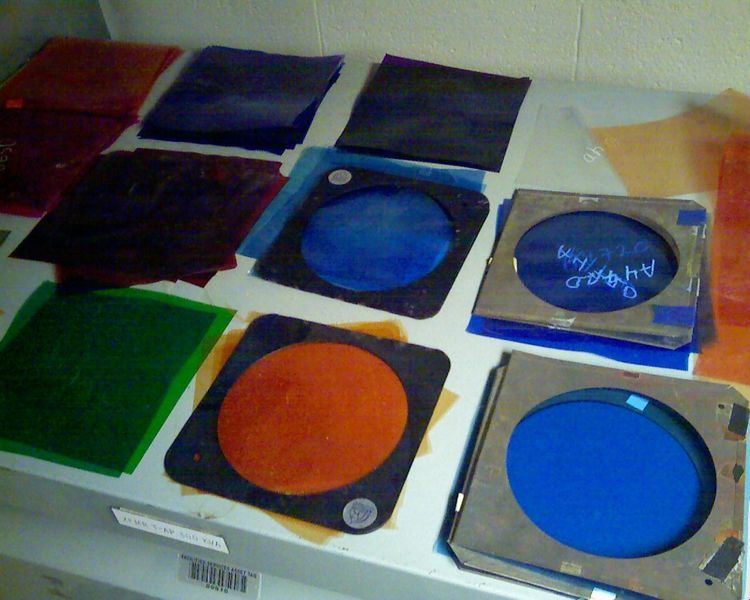 | ||
Stage lighting accessories are components manufactured for conventional (non-automated) stage lighting instruments. Most conventional fixtures are designed to accept a number of different accessories designed to assist in the modification of the output. These accessories are intended to either provide relatively common functionality not originally provided in a fixture (such as beam shaping through barn doors), or to extend the versatility of a lighting instrument by introducing features. Other accessories have been designed to overcome limitations or difficulties some fixtures present in specific applications.
Contents
All stage lighting accessories fall into one of three distinct categories: components installed inside the fixture, components affixed to the front of the fixture (in front of the lens), or components mounted elsewhere on the exterior of a fixture (to the side, top or bottom).
Pattern holder
A pattern holder or gobo holder, is a metal frame designed to hold a gobo. Gobo holders are placed inside a fixture through a specifically designed opening, which places the pattern directly in the focal plane of the fixture. By placing the pattern inside of the focal plane of a fixture adjustments to image (hard or soft edges) can easily be created. Larger pattern holders are also available designed to mount into the accessory slot on some fixtures, allowing for the use of larger gobos, or the projection of two overlapping patterns from a single fixture.
Gobo rotator
Gobo rotators are metal frames designed to hold a gobo. They have a much larger cross-section (thicker) than a regular gobo holder due to the motors and gearing required to facilitate rotation. Because of their increased thickness, gobo rotators are not placed inside fixture through the specifically designed opening (the gobo slot) but instead install into the accessory (iris) slot. Installing the rotator in the accessory slot still places te pattern inside the focal plane of a fixture, allowing adjustments to the image (creating hard or soft edges). All gobo rotators require an external power source, separate from the lighting fixtures power. Many models allow for remote DMX512 control of motor, permitting fine control of rotation speed and orientation of pattern. Features can also include uni- or bi-directional control of the rotation of a pattern, as well as indexing (tracking a patterns position to return it to the same orientation repeatedly.) Several models are available which can hold two patterns simultaneously, and may allow patterns to rotate separately or in opposite directions.
Iris
The iris is a metal frame housing designed with an adjustable shutter assembly (an iris). The iris is placed inside fixtures through a specifically designed opening, the accessory (or iris) slot. The iris is placed inside focal plane of fixture, before the lens assembly. An iris is designed to reduce diameter of beam emitted from fixture. The iris assembly is different from the donut as it adjusts the diameter of the beam, not the amount of off-axis light emitted.
Effects loop
Gam Products Inc. manufactures two different models of effect loop, the Film/FX and the SX4. Both of these devices use a ribbon punched with a pattern to project a continuous scrolling pattern. The Film/FX is designed to install into the accessory slot, while the SX4 is installed directly into the fixture, between the lamp assembly and barrel.
